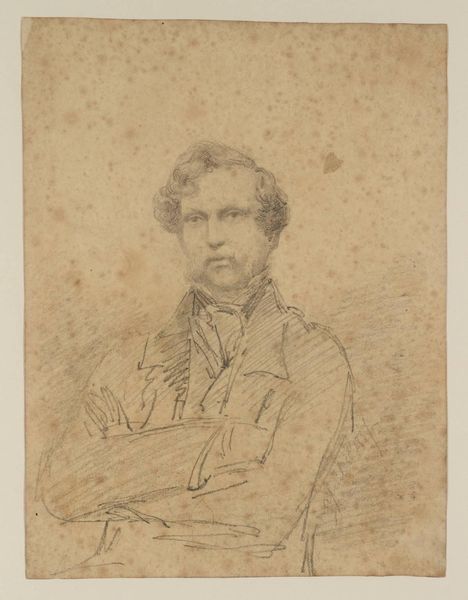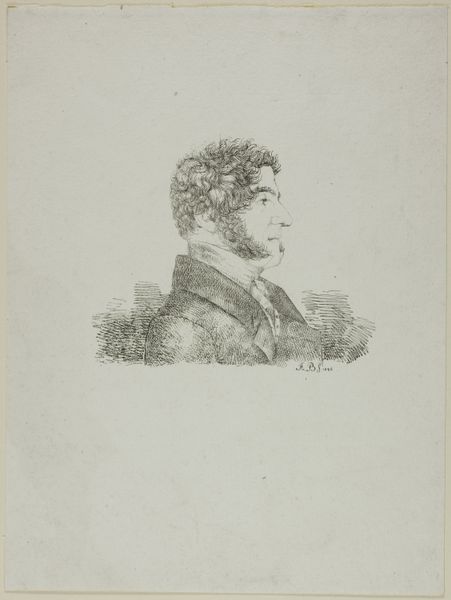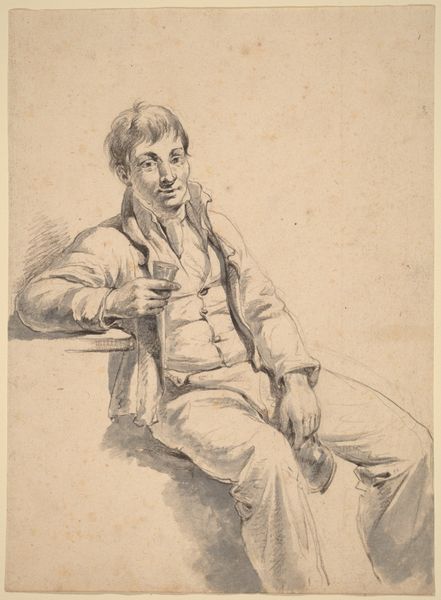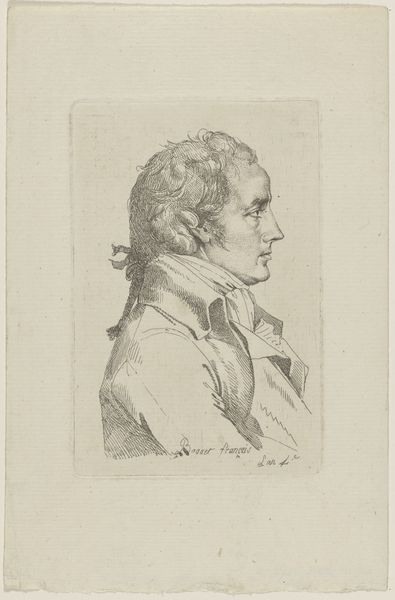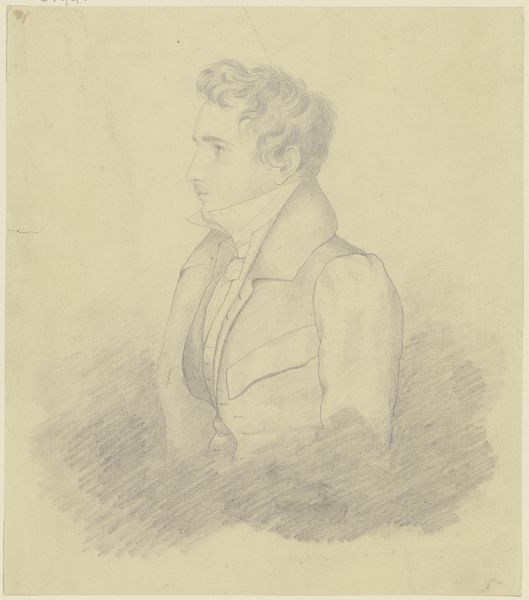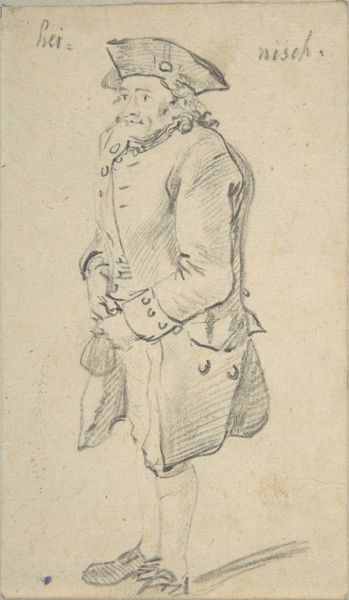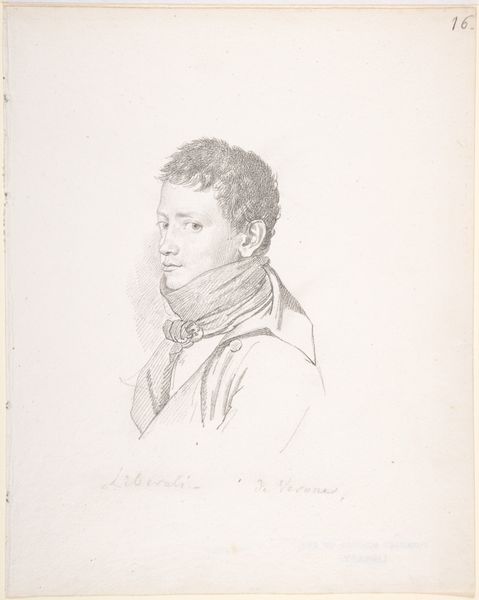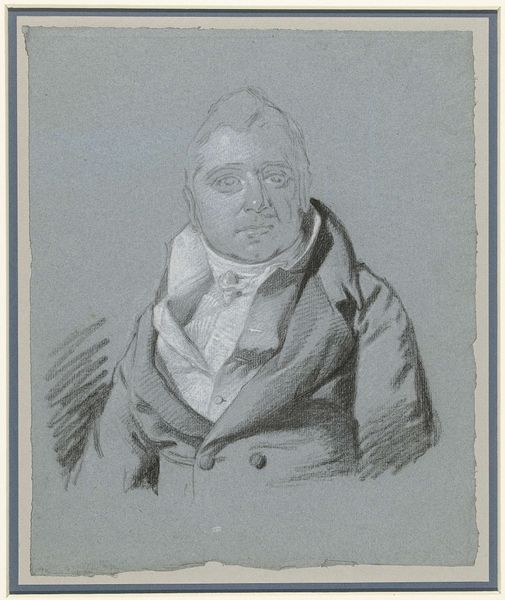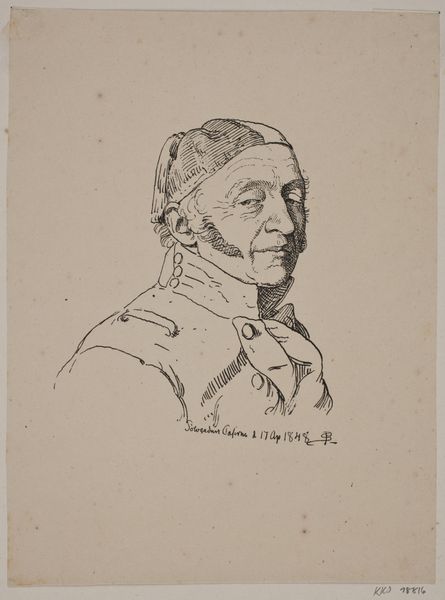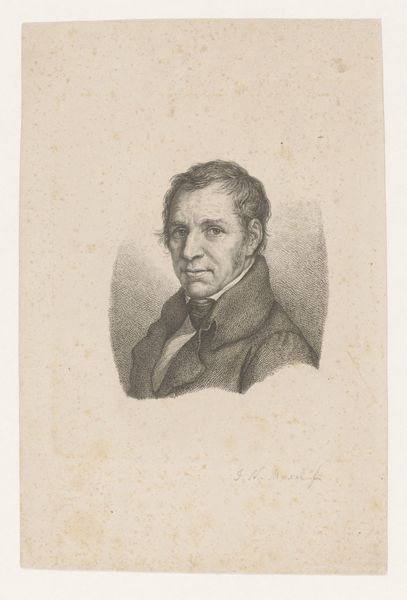
Dimensions: 149 mm (height) x 92 mm (width) (bladmaal)
Curator: Immediately striking; I see precision married with a surprising softness, it breathes introspection. Editor: And a certain stillness. This is "Portræt af Jacob Kornerup," created in 1853 by Johan Frederik Busch. The materials are listed as drawing, print, ink, and engraving. It's currently held at the SMK, Statens Museum for Kunst. Curator: Right, a profile captured in ink, its textures delicate, almost tentative. I can’t help but consider the power dynamics at play – who gets memorialized and how during that period. It is such a carefully constructed, masculine, image. Editor: The line work certainly dictates much of the affect, and one should really focus on that element to examine it more closely. It gives it the almost etched feel of a steel plate engraving, which, when you think of the labour that goes into such work, conveys a certain preciousness to the image itself. Curator: Absolutely. The labor mirrors the subject’s presumed status in society. What were the circulation methods for prints such as this during the Romantic era, and how did such reproduction techniques shape understandings of fame? Editor: Prints at the time moved within fairly select circles and operated with a kind of cultural capital among a fairly homogenous section of society, further amplifying that power dynamic you just spoke of. Mass production democratized access later in history, which shifted the relationship of maker to artwork. Curator: Yes. How are these social forces expressed, concealed, or challenged in such artistic portraiture? It begs further enquiry to examine contemporary intersectional perspectives and understand how the subjects’ self-representation in visual culture both reproduces, and resists historical power structures. Editor: From the materials to the distribution and modes of artistic interpretation – all deeply fascinating facets. This really opens the gateway to comprehending art's complex entanglement with the world of labor, class, and societal influence during that time. Curator: Indeed. I find my perspectives on the role it occupies in culture profoundly shifted now, and can go on and assess the artistic practice as one form of resistance. Editor: Precisely, looking at it as just a portrait simply no longer stands, and hopefully never again!
Comments
No comments
Be the first to comment and join the conversation on the ultimate creative platform.
